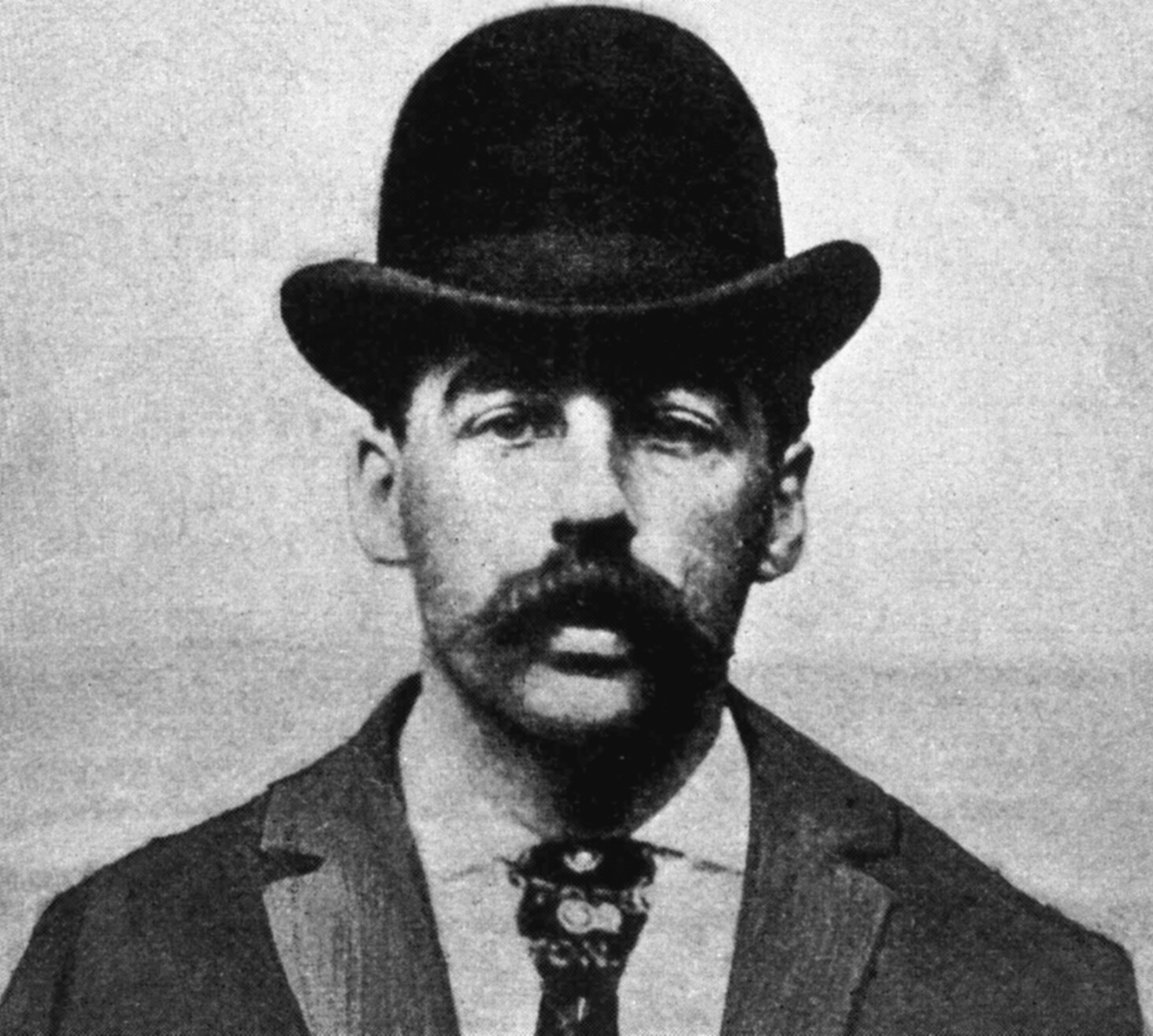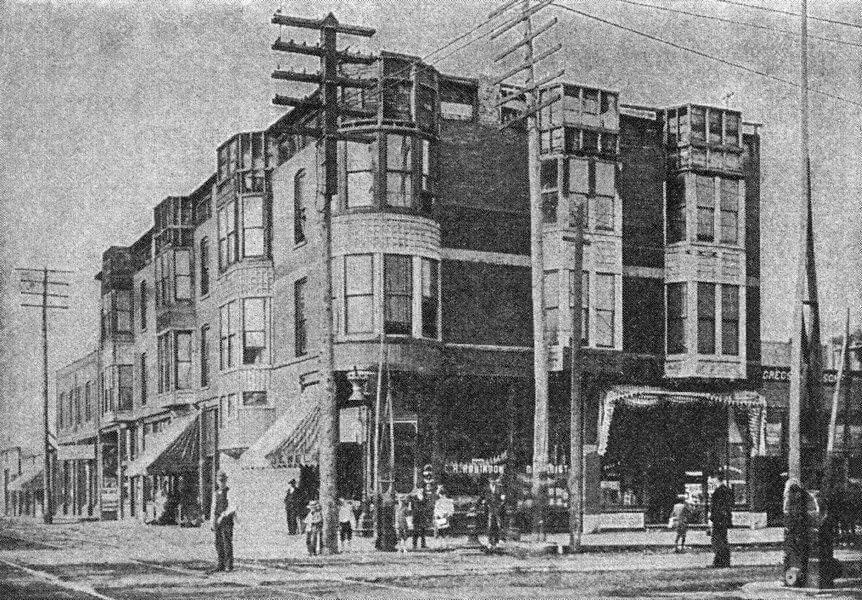H. H. Holmes
H.H. Holmes, widely considered to be the nation’s first serial killer, was apprehended after being tracked to the West End in 1894.
H.H. Holmes (born Herman Mudgett) was born in Gilmanton, New Hampshire on May 16, 1861. His family was wealthy and he was able to pursue an early interest in medicine and surgery. Some biographies suggest that Holmes may have performed amateur surgeries on animals. He was admitted to medical school at the University of Michigan, and graduated despite being a poor student. By 1885, Holmes moved to Englewood, Illinois and adopted the name “Dr. H.H. Holmes” after beginning as a pharmacist. He intended to pay homage to Sherlock Holmes with the name, though he may have changed his name to avoid being caught for an earlier crime; Holmes left a wife and child in New Hampshire after being accused of fraud and murder. Holmes’ serial murders began in Chicago: he lured victims into a house built from scratch, with winding staircases and chutes, trap doors, sound-proofed rooms, acid vats, “gas jets,” and doors locking from the outside. The house had a first-floor drug store and third-floor apartments; all of the tools for murder were on the second floor, for Holmes to prey on tourists. In the “Murder Castle,” as the house became known, Holmes cremated his victims inside a kiln; if not burned, Holmes would sell the bodies to local medical schools needing cadavers. The construction workers who built the Murder Castle were routinely fired before they could learn enough of Holmes’s purposes to report him.
Holmes’ was motivativated to murder people in order to steal their property. During the 1893 World’s Fair in Chicago, he engaged with multiple women in order to kill them for their life savings. Holmes’ penchant for violence was inextricably tied to his financial schemes; just to get the money to build the Murder Castle, he convinced the owners of the drug store he worked at to finance it. Once the World’s Fair closed, Holmes fled Chicago after being arrested for insurance fraud as a result of his house catching fire. He then joined up with Ben Pitezel, who agreed to fake his own death in order for them to collect on a $10,000 life insurance policy from the Fidelity Mutual Life Insurance Association of Philadelphia. The two committed a string of insurance fraud through Pennsylvania, Texas, Tennessee, Colorado, Missouri, and New York. In Missouri, Holmes was jailed for fraud and met Marion Hedgepeth, who agreed to join in on the scheme, but their plans unraveled when Holmes killed Pitezel in Pennsylvania. After convincing Pietzel’s wife, who knew of the fraud, that he was still alive, Holmes killed three of Pitezel’s children out of fear that they would learn of the scheme and report it to authorities.
In 1894, once insurance investigators caught up with Hedgepeth’s activities, Holmes’ arrest was inexorable. Holmes arrived in Boston and checked into a boarding house in the West End, under the name H.M. Howell from Denver, Colorado. On the afternoon of November 17, 1894, Holmes was arrested by Boston police officers and an agent from the Pinkerton detective agency. In November 1895, Holmes was convicted in Philadelphia of murdering Ben Pitezel; before the conviction, Holmes confessed to the insurance fraud, and after the conviction, he confessed to committing over one-hundred-and-thirty murders.
Article by Adam Tomasi
Source: Encyclopedia Britannica; Rolling Stone; Boston Globe, “When the devil was caught in Boston,” November 17, 2017 (ProQuest)










2 Comments